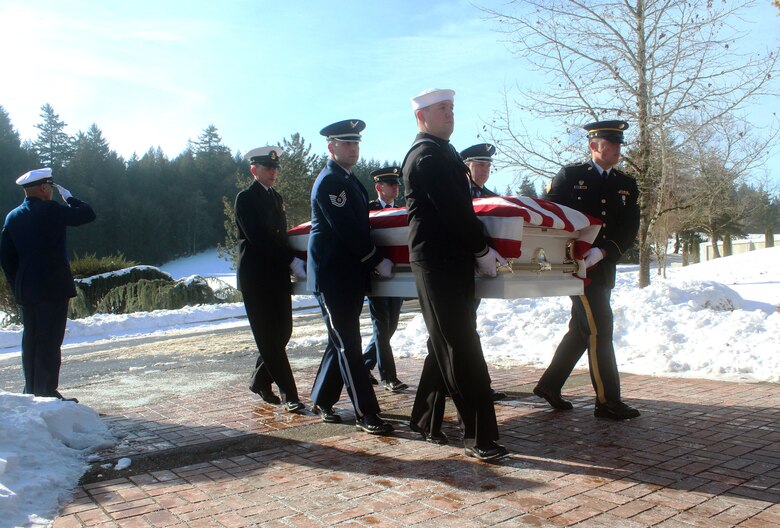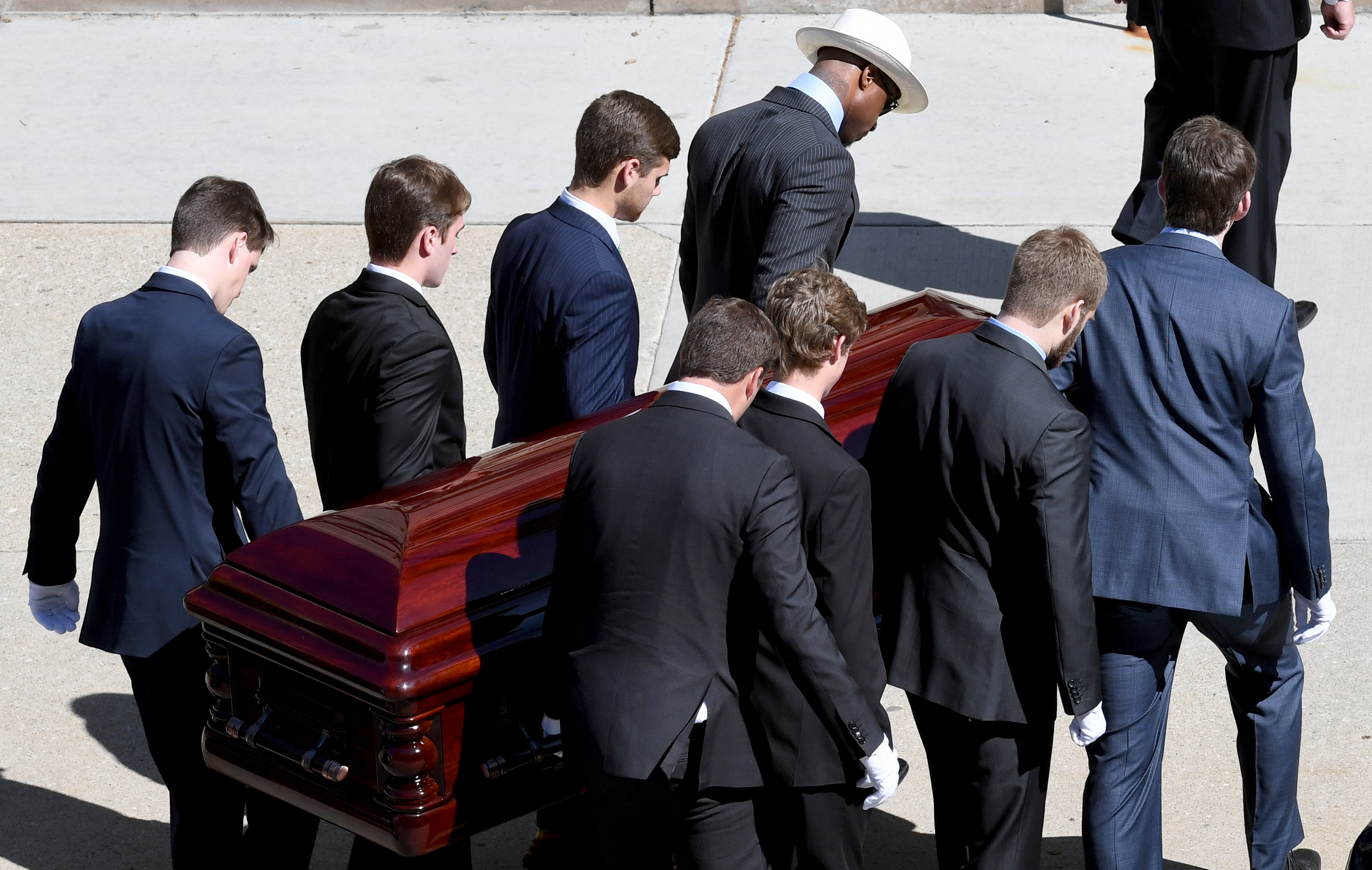In Funeral Etiquette, Who Are Pallbearers? | Synonym Pallbearers History


••• George Doyle/Stockbyte/Getty Images
Most modern coffins have handles allowing the coffin to be carried by six people.
During a funeral service, the pallbearers carry the casket when it needs to be moved. The term "pallbearer" comes from the Latin word "pallium," which means "cloak." In ancient Rome, a person's cloak was used as a burial covering. Eventually, "pallium" became "pall," and the coverings for bodies became first shrouds and later caskets. Those who carry the body to the final resting place are still known as pallbearers.
The Duties
The duties of pallbearers are both practical and ceremonial. They sometimes carry the casket into the church or meeting hall. After the funeral service, they carry the casket from the church to the hearse and then from the hearse to the graveside. In that way pallbearers are a formal part of the funeral procession. Their service, however, is more than just a practical one. By carrying the casket, they honor and serve the deceased one last time.
Selecting Pallbearers
Typically, six pallbearers are chosen because most caskets have six handles, three on each side. Traditionally, pallbearers were not family members. Lillian Eichler in the 1921 "Book of Etiquette" stated that relatives "are seldom appointed as pallbearers." Though that tradition persists in some circles, it is becoming increasingly rare, as is the tradition of pallbearers being all male. Today pallbearers can be family members, close friends, coworkers, fellow church members or fellow lodge members. Members of the armed forces are sometimes carried by their comrades in arms. Those who supported the deceased the most in life should be considered appropriate pallbearers.
Practical Considerations
Practically speaking, not everyone can perform the role of pallbearer. Caskets weigh from 100 to 300 pounds. If the deceased was a large person, a pallbearer could be carrying 100 pounds or more. At the cemetery, pallbearers will be required to carry the casket over unpaved and possibly uneven ground. Some traditions require that the casket be lifted to the pallbearers' shoulders and carried that way. For that reason, pallbearers are typically young, strong adults with no health restrictions on the amount of weight they can lift.
Honorary Pallbearers
If the physical demands of carrying the casket are too much for friends and family, the funeral home may provide professionals to move the casket when necessary. If the body is cremated before the funeral service, pallbearers are unnecessary. In these cases, the family may still elect to have six to eight honorary pallbearers. Honorary pallbearers either flank the coffin or precede it in the procession. Similarly they can either flank or precede the person carrying the urn. Although their practical role in the funeral is different from that of pallbearers, honorary pallbearers honor the deceased by seeing them to their final resting place.
Susan Peterson is the author of five books, including "Western Herbs for Martial Artists and Contact Athletes" and "Clare: A Novel." She holds a Ph.D. in text theory from the University of Texas at Arlington and is an avid cook and gardener.
- George Doyle/Stockbyte/Getty Images

